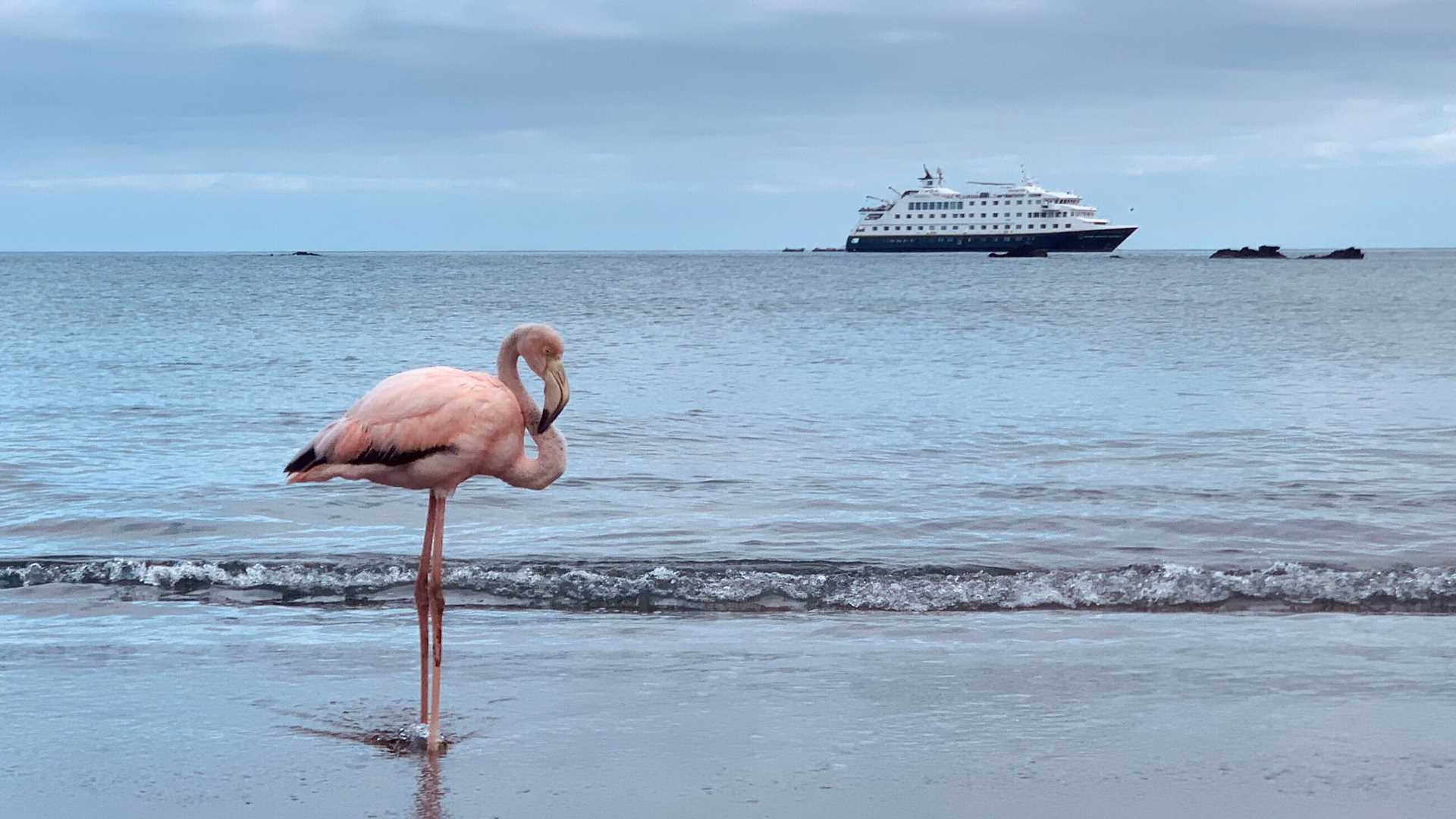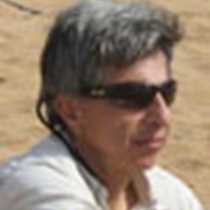Floreana was the first island colonized by people in the Galapagos. Ecuador took possession of the Galapagos Islands in 1832 and established a penal colony on Floreana. When Darwin visited the Galapagos in 1835, the second island he landed on was Floreana. During his stay, he met with some of the convicts and explored the highlands.
Floreana Island has been shaped by volcanic activity and ecological evolution. When we arrived at Point Cormorant, we were greeted by the striking, green-tinted sand on the beach. The sand is colored by olivine crystals, a remnant of the island’s volcanic origins.
A short trail led us to a contrasting white sand beach on the opposite side of the point. Along the way, we passed by a brackish lagoon that is home to a small but significant population of flamingos. As we hiked in the forest, we found Darwin’s finches, Galapagos flycatchers, and a dark-billed cuckoo. We explored a nearby rocky islet to find the Floreana mockingbird, which we added to our Galapagos bird list.







